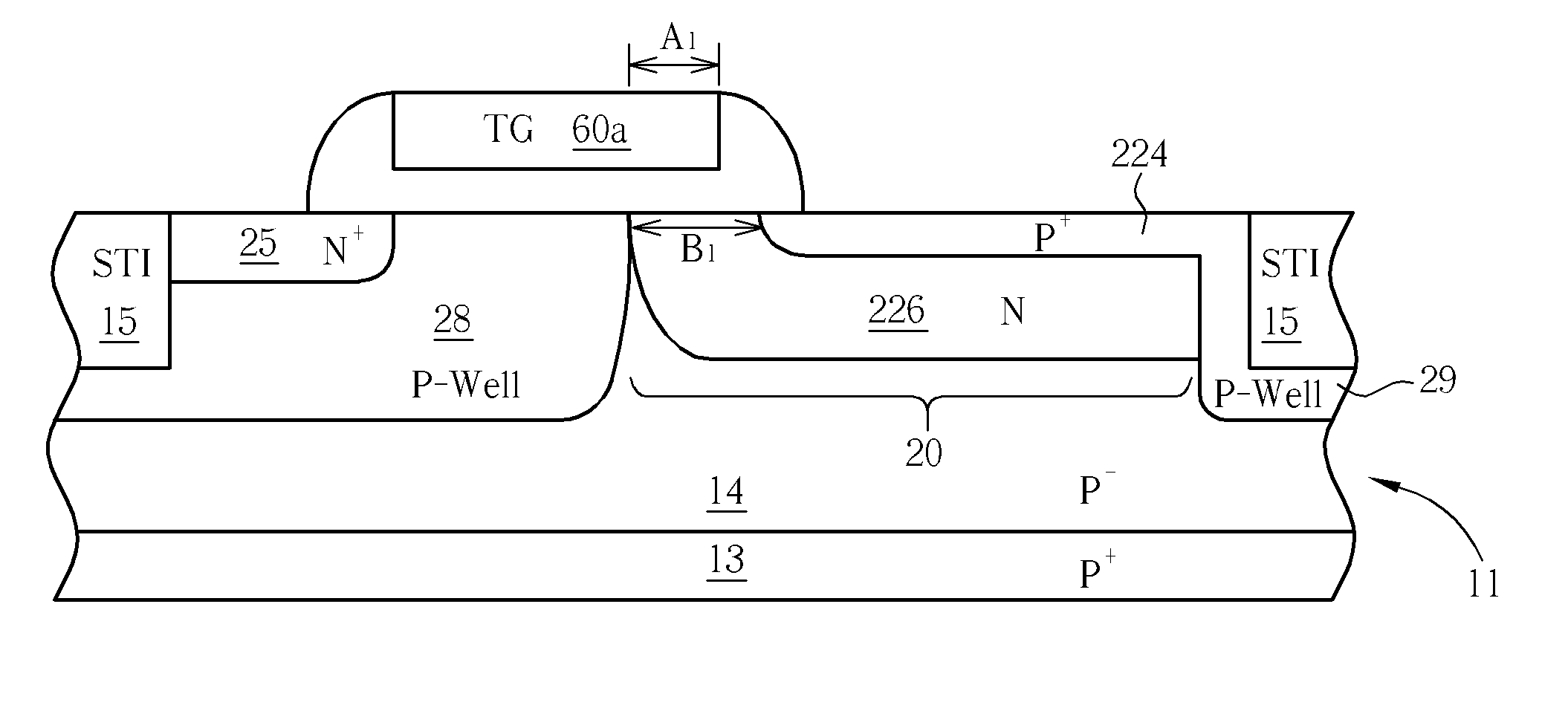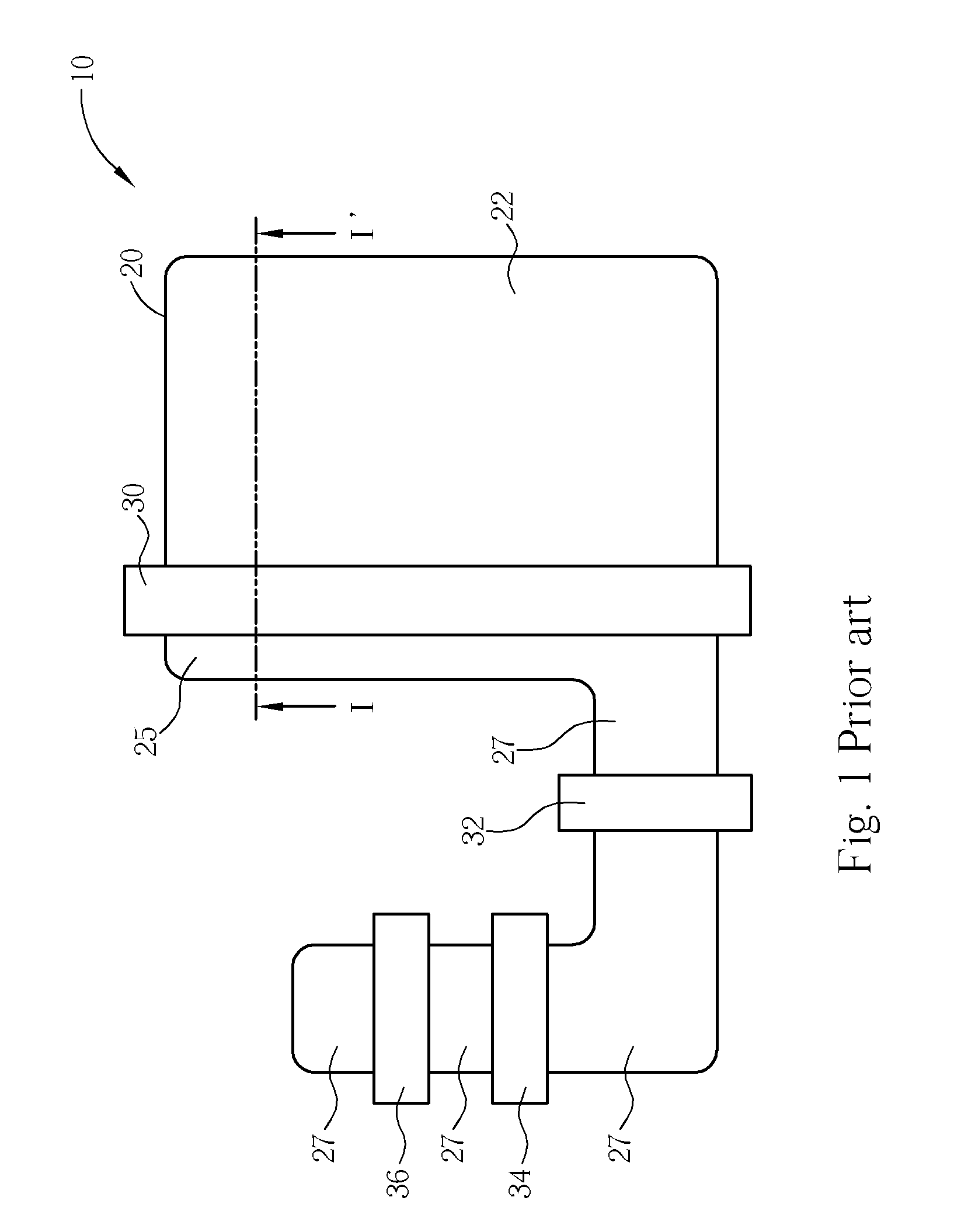CMOS image sensor
a sensor and image technology, applied in the field of image sensors, can solve the problems of narrow dynamic range, undesirable image lag, narrow dynamic range, etc., and achieve the effects of reducing clock feedthrough, image lag, and improving dynamic rang
- Summary
- Abstract
- Description
- Claims
- Application Information
AI Technical Summary
Benefits of technology
Problems solved by technology
Method used
Image
Examples
Embodiment Construction
[0023] Please refer to FIGS. 4-6. FIG. 4 is a top view of an exemplary four-transistor (4T) pixel cell of a CMOS sensor 100 according to one preferred embodiment of this invention; and FIGS. 5 and 6 are schematic, cross-sectional diagrams taken along line 11-11′ and line III-III′ of FIG. 4, respectively, where like numeral numbers designate like elements, regions or layers.
[0024] As shown in FIG. 4, the CMOS sensor 100 comprises a charge-accumulating region 20 in an underlying portion of a substrate 11. A pinned photodiode 220 is formed in the charge-accumulating region 20. A transfer gate 60 is provided for transferring photoelectric charges generated in the charge-accumulating region 20 to a floating diffusion region (sensing node) 25.
[0025] The floating diffusion region 25 is coupled to a gate 34 of a source follower transistor. The source follower transistor provides an output signal to a row select access transistor having a gate 36. A reset transistor having a gate 32 resets...
PUM
 Login to View More
Login to View More Abstract
Description
Claims
Application Information
 Login to View More
Login to View More - R&D
- Intellectual Property
- Life Sciences
- Materials
- Tech Scout
- Unparalleled Data Quality
- Higher Quality Content
- 60% Fewer Hallucinations
Browse by: Latest US Patents, China's latest patents, Technical Efficacy Thesaurus, Application Domain, Technology Topic, Popular Technical Reports.
© 2025 PatSnap. All rights reserved.Legal|Privacy policy|Modern Slavery Act Transparency Statement|Sitemap|About US| Contact US: help@patsnap.com



